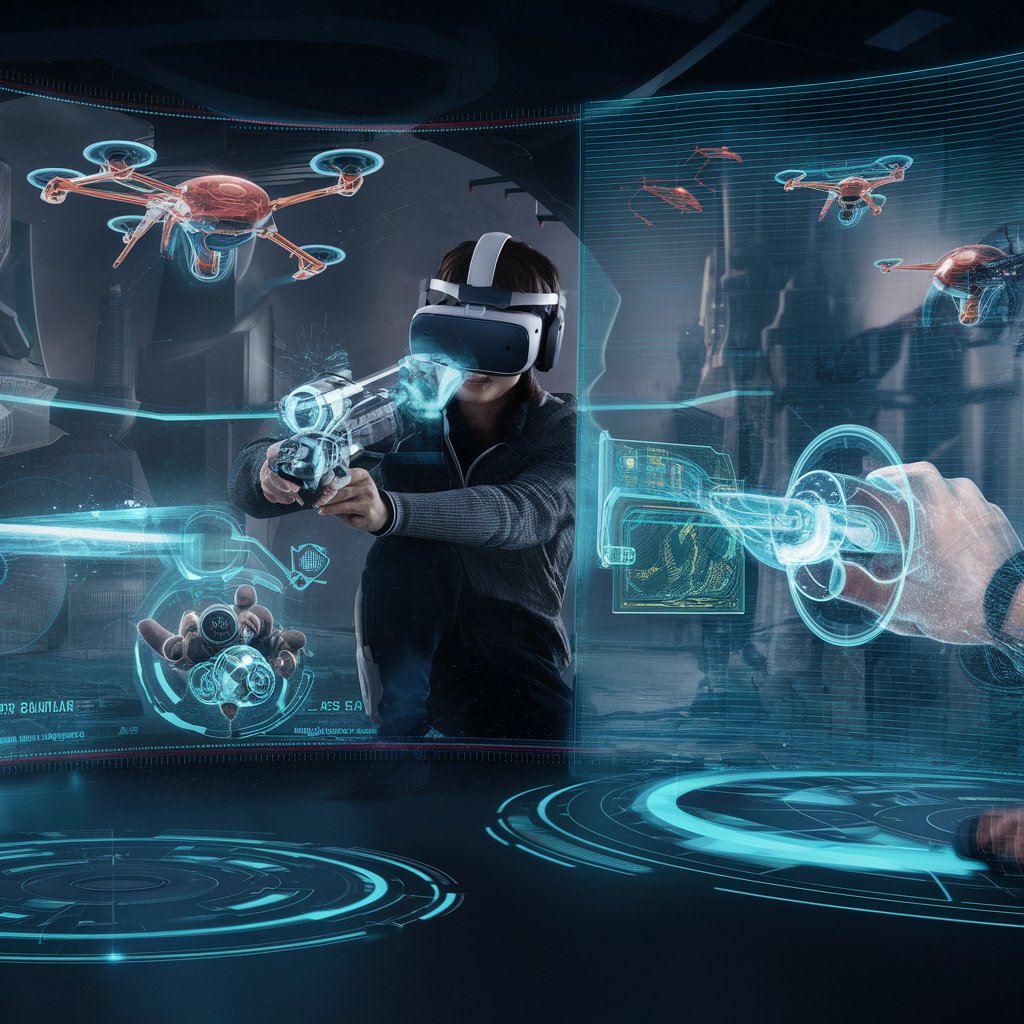Virtual reality (VR) is profoundly influencing game mechanics and player strategies, marking a significant shift in how games are designed and played. The immersive nature of VR introduces new dynamics that fundamentally alter traditional game mechanics and strategic approaches, offering a richer and more engaging experience for players.
One of the most impactful changes VR brings to game mechanics is the enhanced sense of spatial awareness. Unlike traditional 2D screens, VR immerses players in a three-dimensional environment where they can physically move and interact. This shift necessitates the development of new gameplay mechanics that leverage this spatial awareness. For instance, in VR games, players often need to navigate their environment by physically walking, ducking, or reaching out, which adds a layer of realism and complexity. Game designers are now crafting mechanics that capitalize on these movements, such as puzzles that require physical manipulation of objects or combat systems that involve real-time dodging and aiming.
Additionally, VR has introduced a new level of interactivity and immersion that influences how players approach strategies. In many VR games, players can interact with their environment in a more natural and intuitive manner. For example, in a VR shooter, players can physically aim their weapon and use gestures to reload or perform other actions, which enhances the realism of the combat experience. This level of interaction encourages players to develop new strategies that take advantage of the physicality of the VR environment. Players must adapt their tactics to the immersive nature of VR, considering factors such as their physical position and movement within the virtual space.
The impact of VR on player strategies extends beyond individual gameplay to multiplayer and competitive scenarios. In VR multiplayer games, spatial awareness becomes a crucial aspect of strategy. Players can use the 360-degree view to outmaneuver opponents, communicate more effectively with teammates, and utilize the environment in creative ways. For example, in a VR-based team shooter, players can physically move to take cover, flank enemies, or coordinate with teammates in ways that are not possible in traditional 2D games. This requires a shift in strategic thinking, as players must be aware of their positioning and the dynamic nature of the VR environment.
Furthermore, VR influences game mechanics by enabling new types of gameplay experiences that were previously not feasible. VR’s ability to create fully immersive environments allows for innovative game mechanics, such as virtual reality-based crafting, exploration, and simulation. These mechanics offer players new ways to engage with the game world and develop strategies that are tailored to the unique interactions provided by VR. For example, a VR simulation game might allow players to build and manage a virtual world with a level of detail and interactivity that enhances strategic planning and execution.
As VR technology continues to evolve, it will undoubtedly bring further advancements to game mechanics and player strategies. The growing sophistication of VR equipment and software will likely lead to even more immersive and interactive gameplay experiences. Designers will continue to explore new ways to integrate physical movement, spatial awareness, and intuitive interaction into game mechanics, pushing the boundaries of what is possible in gaming.
In summary, VR is reshaping game mechanics and player strategies by introducing new levels of immersion, interactivity, and spatial awareness. This transformation influences how games are designed and how players approach gameplay, leading to innovative mechanics and strategic approaches that enhance the overall gaming experience. As VR technology advances, its impact on game mechanics and player strategies will continue to evolve, offering exciting possibilities for the future of gaming.

